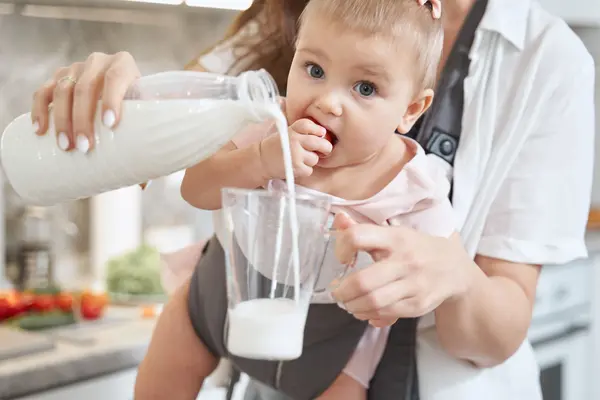Food & Nutrition
When Can Babies Start Drinking Milk?

The question of when babies can start drinking milk is an exciting milestone for parents. Babies can typically begin drinking cow’s milk once they are 1 year old. Whole milk is recommended for children under age 2 as it is a valuable source of essential vitamins and nutrients, including calcium and vitamin D, which are critical for your child’s growth and development. Transitioning to cow’s milk marks a significant step away from formula or breast milk, and many parents find it easier and more cost-effective.
If you’re breastfeeding, there’s no need to stop; you can continue breastfeeding for as long as you and your baby choose, even if they’re also consuming cow’s milk.
Why Cow’s Milk is Beneficial for Your Baby
Milk is packed with essential nutrients that play an important role in your child’s development. It is an excellent source of calcium, which helps build strong bones and teeth, while also aiding in muscle control and blood clotting. Additionally, milk is one of the few natural sources of vitamin D, a nutrient vital for calcium absorption and bone health. Most milk in the U.S. is fortified with vitamin D, ensuring your child gets a healthy dose.
Furthermore, milk provides protein necessary for growth and carbohydrates to give your child sustained energy throughout the day. Ensuring your child gets enough calcium from an early age can lower their risk of developing conditions like high blood pressure, stroke, and hip fractures later in life.
When Should Babies Start Drinking Milk?
It’s crucial not to introduce cow’s milk to your baby until they reach their first birthday. Babies under 1 year old have difficulty digesting cow’s milk, which can place stress on their developing kidneys, potentially leading to illness, fever, and diarrhea. Additionally, cow’s milk lacks adequate levels of iron, vitamin C, and other key nutrients needed for your baby’s early development. Introducing cow’s milk too early can even contribute to iron-deficiency anemia in some babies.
How Much Milk Should Toddlers Drink?
Once your child turns 1, experts recommend offering 16 to 24 ounces (2 to 3 cups) of whole milk daily. This helps ensure they receive sufficient calcium and vitamin D for proper growth. From ages 2 to 5, children should be offered slightly less milk—around 16 to 20 ounces (2 to 2½ cups). At age 2, it’s also recommended to switch from whole milk to low-fat or skim milk, depending on your child’s health needs.
The Best Milk for Toddlers
Whole milk is the best choice for toddlers under 2, as it provides the healthy fats necessary for weight gain, brain development, and vitamin absorption. However, if there is a family history of obesity or heart disease, you may want to consult your pediatrician about switching to lower-fat milk.
While organic milk is often chosen by some parents, both organic and non-organic milk offer the same nutritional benefits. The primary difference is that organic milk comes from cows not treated with bovine growth hormone, though it is typically more expensive.
Milk Alternatives for Toddlers
If your family follows a vegan diet or your child has a milk allergy, there are plant-based milk alternatives available. However, no alternative milk should replace cow’s milk before your child is 1 year old. Many plant-based milks contain fewer nutrients than cow’s milk, so it’s important to choose a fortified option to ensure your child gets enough calcium and vitamin D. Soy milk is a good alternative because it’s nutritionally similar to cow’s milk, offering comparable protein, calcium, and vitamin D. Other options, like oat milk or almond milk, should be fortified with essential nutrients and should be chosen with care.
What If Your Toddler Won’t Drink Milk?
It’s not uncommon for toddlers to be hesitant about drinking cow’s milk at first. If your child resists, try mixing cow’s milk with breast milk or formula at first, gradually increasing the amount of cow’s milk. Serving milk at room temperature or warming it slightly may also help ease the transition. If your toddler still refuses milk, consider adding dairy to other foods like cereal, smoothies, or yogurt to ensure they get the nutrition they need.
Milk Allergy and Lactose Intolerance
If your child previously consumed cow’s milk-based formula without issues, it’s likely that they will tolerate cow’s milk once they’re old enough. However, if your child had soy formula, it’s a good idea to consult with your pediatrician before introducing cow’s milk. While lactose intolerance is uncommon in babies, it can develop later. Symptoms may include stomach cramps, bloating, and diarrhea. If your child has a milk allergy, it’s essential to avoid all dairy products and consult your pediatrician for guidance on alternative milk sources.
By understanding the right time to introduce cow’s milk and how to incorporate it into your child’s diet, you can ensure they get the nutritional benefits needed for their growth and development.












